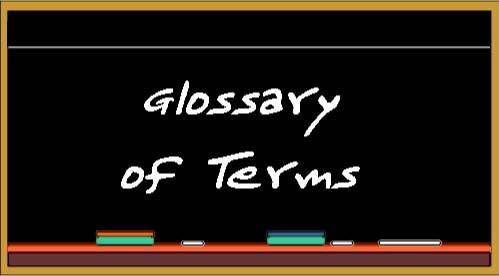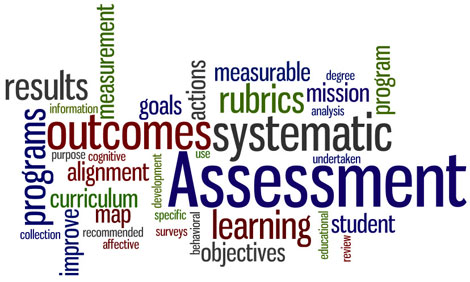When are informal assessments useful (versus formal assessments)? How valuable are informal assessments? Can informal assessments be good replacements for formal assessments?
When one thinks of assessment, grades and test results are what easily come to mind. Unless we have units or a degree in Education, we may not be aware that we are also using informal assessment. It is easier to discuss the value of formal assessments in as much as they are “used to assess overall achievement, to compare a student’s performance with others at their age or grade, or identify comparable strengths and weaknesses with peers”. (Weaver, 2007 p. 1) Formal assessments are typically comprised of standardized tests that have prescribed norms for conducting the test, means of scoring and interpretation. While ease of use, reliability, its value as a basis for comparing student performance against students in the same age or grade level are among its advantages, formal assessment has its disadvantages as well. They are criticized for being overused, biased against a certain ethnicity or student with limited English proficiencies, heavily reliant on multiple choice type questions and may have low content validity especially for bilingual learners. (Navarete, et al. 1990)
On the other hand, “Informal assessments are not data-driven but rather content and performance driven”. (Weaver, 2007 p. 1) Information gathered from informal assessments are “used to make judgments about children’s learning behavior and characteristics or programs using means other than standardized instruments”. (Morrison, 2008 p.1) Informal assessments take into account students’ levels of ability in performing specific tasks. These tasks, in turn, are appropriately selected so that students are expected to perform them reasonably. Informal assessments also aim to pinpoint the strengths and weaknesses of students as individuals regardless of age or grade level standards. (Navarete, et al. 1990) Forlizzi (2004) recognizes the importance of informal assessment in instruction because it provides instructional staff with frequent monitoring and guidance in answering the questions “How are we doing?” and “Where are we going?”.
Although informal assessments are time-consuming because they are conducted over a period of time, the value, it seems of informal assessment, lies in its ability to provide immediate feedback, ongoing and continuous measure of student progress, areas of strengths and weaknesses, and its role in determining future courses and teaching strategies. Further, it is adoptable and adaptable to tailor to student’s, teacher’s administrator’s, school board’s needs.
Having discussed the advantages and disadvantages, characteristics and value of each, I don’t think that informal assessments can effectively replace formal assessments. Rather, both types of assessment should be used together to provide educators with enough insight to as to a student’s mastery of a topic or skill and the areas where he or she may need help. Also, data and information gathered from both may be useful for students to know their levels of achievement and what they need to do in order to meet the learning goals and objectives set out by their teacher or by their school. What I have come to realize from reading the prescribed and additional materials in this course is that no assessment is perfect in itself and that educators must not judge the abilities, talents, weaknesses and needs of a student based on testing alone. They must also give importance to assessments which may seem casual, simple or time-consuming, but also indicative of the direction in which classroom instruction is bound to go.
Although I have been using assessment for a number of years as a big part of my job, I have never really given it much thought until now. I always took for granted that it was part of our school’s application requirements or given at the end of a school year. Results of standardized tests, report cards with numeric and/or letter grades, teacher and principal evaluations, class observations, student portfolios, interviews and the like are just some of the assessments used at our school. Enrolling in this class, has made me aware of the different types of assessment, their uses, differences, advantages, disadvantages and most especially their value. By examining both formal and informal assessment, I can now better appreciate and determine which one to use at different stages of our school’s admissions process, and which results to share with faculty, fellow administrators, students, parents and the school board.
Is reflective teaching a necessary skill for informal assessment to effectively facilitate teaching-learning? (What does it mean to reflect about teaching?)
Reflective teaching is a necessary skill for informal assessment to effectively facilitate teaching-learning. In How We Think (1910), John Dewey describes reflective practice as “an active, persistent and careful consideration of any belief or supposed form of knowledge in the light of the grounds that support it and the further conclusions to which it tends”. Applying this to teaching, the “grounds” or basis of the decisions teachers make regarding instruction and curriculum are gathered from the informal assessments they make use of. As established in the discussion of the value of informal assessment earlier, such assessment is indicative of the individual needs of students and how to help them develop their abilities and reach their full potential. But it is not enough for teachers to know their students’ strengths and weaknesses. What they do with this information is what is crucial to the progress of their students and the direction in which their teaching will take.
Dewey further writes that “Reflection involves not simply a sequence of ideas, but a consequence - a consecutive ordering in such a way that each determines the next as its proper outcome, while each in turn leans back on its predecessors” (Dewey 1910 p. 8) Here, Dewey talks about reflective action, reflection that inspires change. When teachers reflect about their teaching, they open their classroom teaching experiences to scrutiny, use the information they gather about their students to carefully examine their students’ learning experiences in the classroom and make the changes necessary to provide the best teaching practices to and the most conducive learning experiences for their students.
References
Weaver, B. (2007). Formal versus informal assessments. Retrieved January 22, 2013 from http:// http://www.scholastic.com/teachers/article/formal-versus-informal-assessments
Navarete, C. et al. (1990). Informal assessment in educational evaluation. Retrieved January 22, 2013 from http://www.finchpark.com/courses/assess/informal.htm
Forlizzi, L. (2004) Informal assessment: the basics. Retrieved January 22, 2013 from http://aded.tiu11.org/disted/FamLitAdminSite/fn04assessinformal.pdf
Morrison, G. (2008) Informal methods of assessment. Retrieved January 23, 2013 from http://www.education.com/reference/article/informal-methods-assessment/
Dewey, J. (1910). How we think. New York, NY: D.C. Heath & Co.
When one thinks of assessment, grades and test results are what easily come to mind. Unless we have units or a degree in Education, we may not be aware that we are also using informal assessment. It is easier to discuss the value of formal assessments in as much as they are “used to assess overall achievement, to compare a student’s performance with others at their age or grade, or identify comparable strengths and weaknesses with peers”. (Weaver, 2007 p. 1) Formal assessments are typically comprised of standardized tests that have prescribed norms for conducting the test, means of scoring and interpretation. While ease of use, reliability, its value as a basis for comparing student performance against students in the same age or grade level are among its advantages, formal assessment has its disadvantages as well. They are criticized for being overused, biased against a certain ethnicity or student with limited English proficiencies, heavily reliant on multiple choice type questions and may have low content validity especially for bilingual learners. (Navarete, et al. 1990)
On the other hand, “Informal assessments are not data-driven but rather content and performance driven”. (Weaver, 2007 p. 1) Information gathered from informal assessments are “used to make judgments about children’s learning behavior and characteristics or programs using means other than standardized instruments”. (Morrison, 2008 p.1) Informal assessments take into account students’ levels of ability in performing specific tasks. These tasks, in turn, are appropriately selected so that students are expected to perform them reasonably. Informal assessments also aim to pinpoint the strengths and weaknesses of students as individuals regardless of age or grade level standards. (Navarete, et al. 1990) Forlizzi (2004) recognizes the importance of informal assessment in instruction because it provides instructional staff with frequent monitoring and guidance in answering the questions “How are we doing?” and “Where are we going?”.
Although informal assessments are time-consuming because they are conducted over a period of time, the value, it seems of informal assessment, lies in its ability to provide immediate feedback, ongoing and continuous measure of student progress, areas of strengths and weaknesses, and its role in determining future courses and teaching strategies. Further, it is adoptable and adaptable to tailor to student’s, teacher’s administrator’s, school board’s needs.
Having discussed the advantages and disadvantages, characteristics and value of each, I don’t think that informal assessments can effectively replace formal assessments. Rather, both types of assessment should be used together to provide educators with enough insight to as to a student’s mastery of a topic or skill and the areas where he or she may need help. Also, data and information gathered from both may be useful for students to know their levels of achievement and what they need to do in order to meet the learning goals and objectives set out by their teacher or by their school. What I have come to realize from reading the prescribed and additional materials in this course is that no assessment is perfect in itself and that educators must not judge the abilities, talents, weaknesses and needs of a student based on testing alone. They must also give importance to assessments which may seem casual, simple or time-consuming, but also indicative of the direction in which classroom instruction is bound to go.
Although I have been using assessment for a number of years as a big part of my job, I have never really given it much thought until now. I always took for granted that it was part of our school’s application requirements or given at the end of a school year. Results of standardized tests, report cards with numeric and/or letter grades, teacher and principal evaluations, class observations, student portfolios, interviews and the like are just some of the assessments used at our school. Enrolling in this class, has made me aware of the different types of assessment, their uses, differences, advantages, disadvantages and most especially their value. By examining both formal and informal assessment, I can now better appreciate and determine which one to use at different stages of our school’s admissions process, and which results to share with faculty, fellow administrators, students, parents and the school board.
Is reflective teaching a necessary skill for informal assessment to effectively facilitate teaching-learning? (What does it mean to reflect about teaching?)
Reflective teaching is a necessary skill for informal assessment to effectively facilitate teaching-learning. In How We Think (1910), John Dewey describes reflective practice as “an active, persistent and careful consideration of any belief or supposed form of knowledge in the light of the grounds that support it and the further conclusions to which it tends”. Applying this to teaching, the “grounds” or basis of the decisions teachers make regarding instruction and curriculum are gathered from the informal assessments they make use of. As established in the discussion of the value of informal assessment earlier, such assessment is indicative of the individual needs of students and how to help them develop their abilities and reach their full potential. But it is not enough for teachers to know their students’ strengths and weaknesses. What they do with this information is what is crucial to the progress of their students and the direction in which their teaching will take.
Dewey further writes that “Reflection involves not simply a sequence of ideas, but a consequence - a consecutive ordering in such a way that each determines the next as its proper outcome, while each in turn leans back on its predecessors” (Dewey 1910 p. 8) Here, Dewey talks about reflective action, reflection that inspires change. When teachers reflect about their teaching, they open their classroom teaching experiences to scrutiny, use the information they gather about their students to carefully examine their students’ learning experiences in the classroom and make the changes necessary to provide the best teaching practices to and the most conducive learning experiences for their students.
References
Weaver, B. (2007). Formal versus informal assessments. Retrieved January 22, 2013 from http:// http://www.scholastic.com/teachers/article/formal-versus-informal-assessments
Navarete, C. et al. (1990). Informal assessment in educational evaluation. Retrieved January 22, 2013 from http://www.finchpark.com/courses/assess/informal.htm
Forlizzi, L. (2004) Informal assessment: the basics. Retrieved January 22, 2013 from http://aded.tiu11.org/disted/FamLitAdminSite/fn04assessinformal.pdf
Morrison, G. (2008) Informal methods of assessment. Retrieved January 23, 2013 from http://www.education.com/reference/article/informal-methods-assessment/
Dewey, J. (1910). How we think. New York, NY: D.C. Heath & Co.




 RSS Feed
RSS Feed